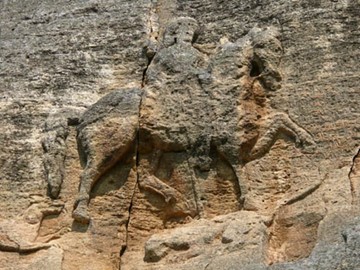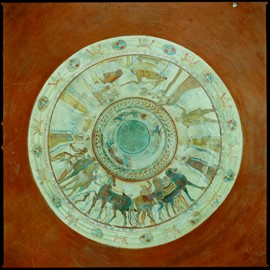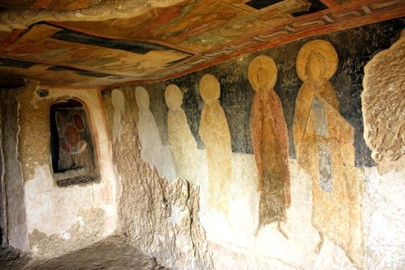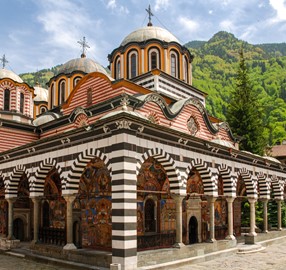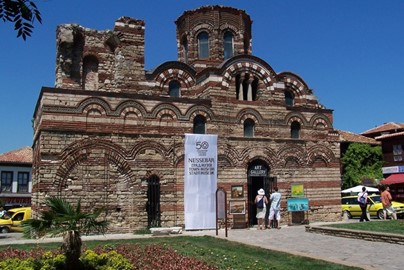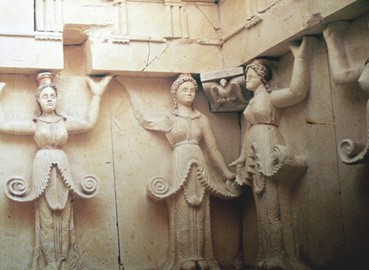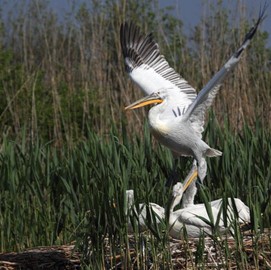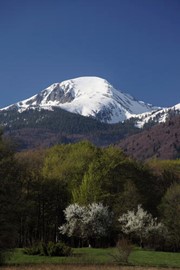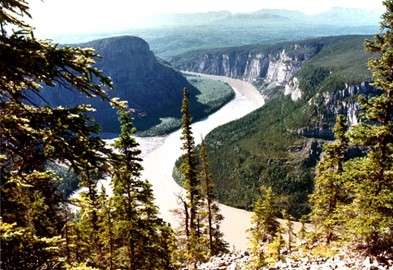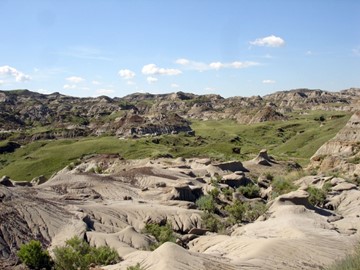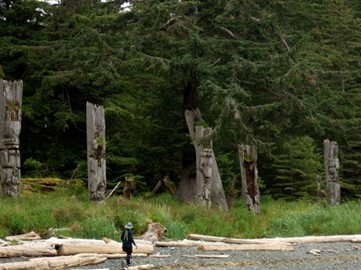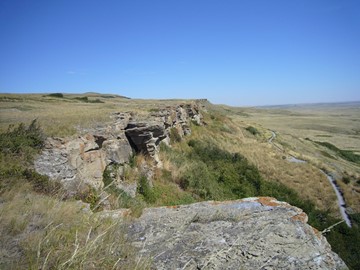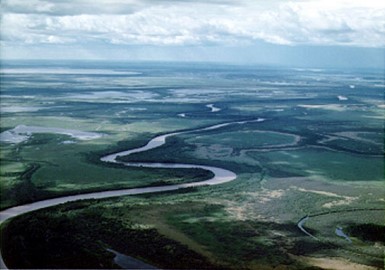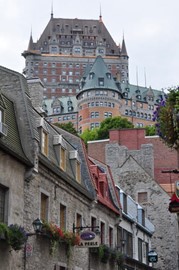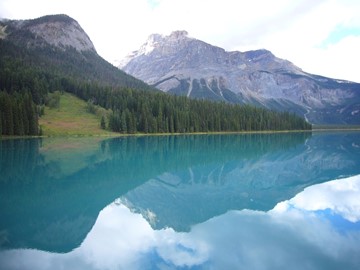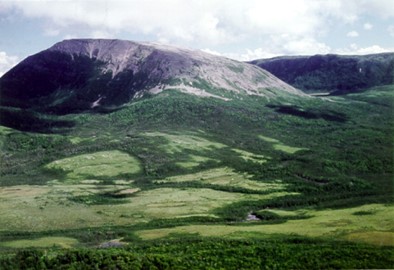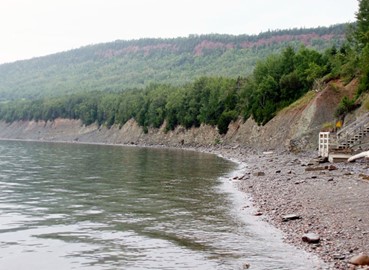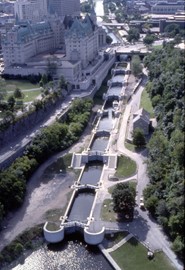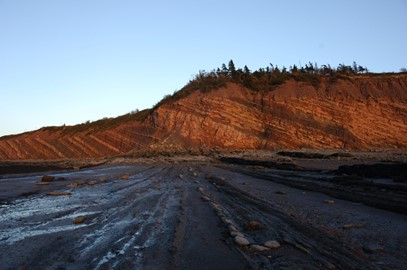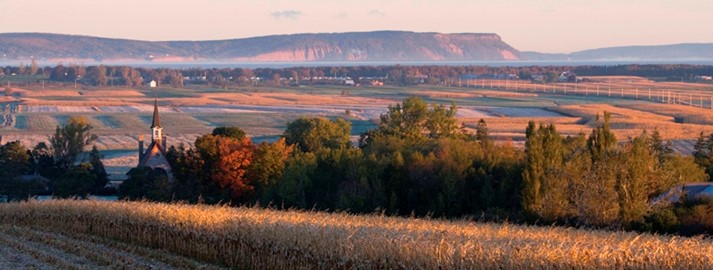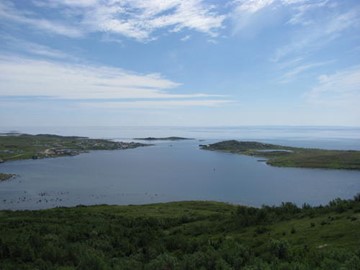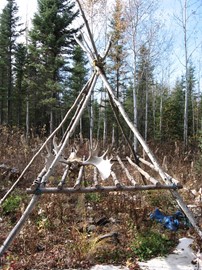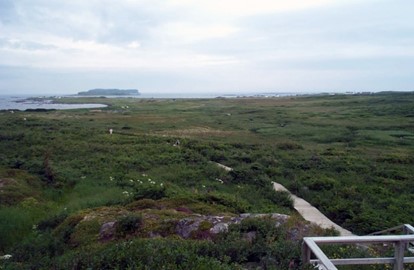region :: europe and north america
Madara Rider
The Madara Rider, a UNESCO World Heritage site in Bulgaria, is a striking 8th-century rock relief carved into a towering cliff. Depicting a triumphant horseman spearing a lion, accompanied by inscriptions, this monumental artwork symbolizes early Bulgarian statehood and artistic prowess under the First Bulgarian Empire. Celebrated for its historical and cultural value, it stands as a unique testament to medieval artistry and power in the region.
Thracian Tomb of Kazanlak
The Thracian Tomb of Kazanlak, a UNESCO World Heritage site in Bulgaria, is a remarkable 4th-century BCE burial chamber celebrated for its vivid frescoes. Hidden within a beehive-shaped dome, the tomb’s murals depict funeral rituals and mythological scenes with exceptional artistry, offering a rare window into Thracian culture and beliefs. Recognized for its historical and artistic significance, it stands as a masterpiece of ancient Hellenistic influence in the region.
Rock Hewn Churches of Ivanovo
The Rock-Hewn Churches of Ivanovo, a UNESCO World Heritage site in Bulgaria, are a collection of medieval chapels, churches, and monasteries carved into cliffs along a river valley. Dating from the 13th and 14th centuries, these sanctuaries feature well-preserved frescoes that blend Byzantine art with local traditions, reflecting the spiritual devotion of monastic communities. Celebrated for their historical and artistic value, they offer a unique glimpse into Bulgaria’s medieval religious heritage.
Rila Monastery
Rila Monastery, a UNESCO World Heritage site in Bulgaria, is a stunning 10th-century Orthodox complex renowned for its architectural beauty and cultural significance. Nestled in a mountainous landscape, it features vibrant frescoes, intricate woodwork, and a striking blend of medieval and 19th-century styles, reflecting centuries of spiritual and artistic evolution. As a symbol of Bulgarian identity and resilience, it remains a vital center of Orthodox Christianity and heritage.
Nessebar
Nessebar, a UNESCO World Heritage site in Bulgaria, is an ancient coastal town celebrated for its rich history spanning over 3,000 years. Known as the 'Pearl of the Black Sea,' it boasts a remarkable blend of Thracian, Greek, Roman, Byzantine, and medieval Bulgarian architecture, including well-preserved churches adorned with frescoes. Recognized for its cultural and historical significance, it stands as a living testament to the region’s diverse civilizations.
Thracian Tomb of Sveshtari
The Thracian Tomb of Sveshtari, a UNESCO World Heritage site in Bulgaria, is a 3rd-century BCE masterpiece of Thracian architecture and art. This well-preserved burial chamber, featuring a unique decorative frieze of ten caryatid-like female figures, showcases exceptional craftsmanship and offers insight into Thracian funerary practices and beliefs. Celebrated for its historical and cultural value, it reflects the sophistication of an ancient civilization in the region.
Srebarna
Srebarna Nature Reserve, a UNESCO World Heritage site in Bulgaria, is a vital wetland ecosystem centered around a serene lake. Renowned for its rich biodiversity, it serves as a critical habitat for rare and endangered bird species, including the Dalmatian pelican, and supports a thriving array of aquatic life. Recognized for its ecological importance, it stands as a pristine example of natural heritage and a key stopover on migratory routes.
Pirin
Pirin National Park, a UNESCO World Heritage site in Bulgaria, is a pristine alpine landscape celebrated for its rugged peaks, glacial lakes, and diverse ecosystems. Home to rare flora and fauna, including the endemic Balkan chamois, it showcases dramatic natural beauty shaped by ancient geological processes. Recognized for its ecological and scenic value, it stands as a testament to the region’s untouched wilderness.
Nahanni
Nahanni National Park, a UNESCO World Heritage site in Canada, is a rugged wilderness renowned for its dramatic landscapes and geological wonders. Featuring deep canyons, towering waterfalls like Virginia Falls, and unique tufa mounds, it showcases the raw beauty of untouched nature shaped by ancient river systems. Recognized for its ecological and scenic significance, it stands as a pristine testament to the region’s wild heritage.
Dinosaur Provincial Park
Dinosaur Provincial Park, a UNESCO World Heritage site in Canada, is a fossil-rich badland celebrated for its extraordinary paleontological significance. Home to one of the world’s densest concentrations of Cretaceous dinosaur remains, it features striking eroded landscapes and over 150 documented species, offering a window into prehistoric life 75 million years ago. Recognized for its scientific and natural value, it stands as a global treasure of Earth’s ancient past.
SGang Gwaay
SGang Gwaay, a UNESCO World Heritage site in Canada, is a remote Haida village site preserved since its abandonment in the late 19th century. Renowned for its weathered totem poles and cedar longhouses, it reflects the artistic mastery and cultural legacy of the Haida people amidst a pristine natural setting. Recognized for its historical and cultural value, it stands as a powerful symbol of Indigenous resilience and tradition.
Head Smashed In Buffalo Jump
Head-Smashed-In Buffalo Jump, a UNESCO World Heritage site in Canada, is an ancient Indigenous hunting site used for nearly 6,000 years. This dramatic cliff, where Plains peoples skillfully drove bison to their deaths, reveals sophisticated communal hunting techniques and offers rich archaeological evidence of pre-contact life. Recognized for its cultural and historical significance, it stands as a testament to Indigenous ingenuity and tradition.
Wood Buffalo
Wood Buffalo National Park, a UNESCO World Heritage site in Canada, is a vast wilderness preserving North America’s largest population of free-roaming wood bison. Spanning diverse ecosystems like boreal forests, wetlands, and salt plains, it also hosts the endangered whooping crane’s only natural nesting ground. Recognized for its ecological importance, it stands as a critical sanctuary for biodiversity and natural heritage.
Québec
Old Québec, a UNESCO World Heritage site in Canada, is a historic gem founded in 1608, showcasing North America’s best-preserved colonial fortified city. With its cobblestone streets, 17th- and 18th-century architecture, and landmarks like the Château Frontenac, it reflects French cultural roots and early European settlement. Recognized for its historical and architectural value, it stands as a living testament to Canada’s colonial past.
Canadian Rocky Mountain Parks
The Canadian Rocky Mountain Parks, a UNESCO World Heritage site in Canada, encompass a stunning array of peaks, glaciers, and alpine landscapes. Featuring iconic sites like Banff, Jasper, Kootenay and Yoho, as well as the Mount Robson, Mount Assiniboine and Hamber provincial parks, this vast wilderness boasts fossil-rich formations, dramatic canyons, and abundant wildlife, shaped by millions of years of geological activity. Recognized for its natural beauty and scientific value, it stands as a pristine show... Read More
Gros Morne
Gros Morne National Park, a UNESCO World Heritage site in Canada, is a geological marvel showcasing ancient continental drift and tectonic wonders. Its dramatic fjords, barren Tablelands, and diverse ecosystems highlight Earth’s history, from exposed mantle rock to glacial-carved landscapes. Recognized for its scientific and scenic significance, it stands as a striking testament to nature’s raw power and beauty.
Miguasha
Miguasha National Park, a UNESCO World Heritage site in Canada, is a fossil treasure trove from the Devonian period, known as the 'Age of Fishes.' Its cliffs preserve an exceptional record of 370-million-year-old marine life, including key species like the lobe-finned fish that mark the transition to land vertebrates. Recognized for its paleontological significance, it stands as a vital window into Earth’s evolutionary past.
Lunenburg
Old Town Lunenburg, a UNESCO World Heritage site in Canada, is a well-preserved 18th-century British colonial settlement founded in 1753. Renowned for its colorful wooden architecture and grid layout, it reflects early European planning and maritime heritage as a historic fishing port. Recognized for its cultural and historical value, it stands as a charming snapshot of Canada’s colonial past.
Rideau Canal
The Rideau Canal, a UNESCO World Heritage site in Canada, is a 19th-century engineering feat completed in 1832, stretching 202 kilometers with 47 locks. Built for military defense and trade, this waterway, lined with historic fortifications and charming lockstations, remains fully operational today. Recognized for its historical and technological significance, it stands as a testament to Canada’s early infrastructure and ingenuity.
Joggins Fossil Cliffs
Joggins Fossil Cliffs, a UNESCO World Heritage site in Canada, are a 300-million-year-old coastal treasure from the Carboniferous period. Renowned for their fossilized forests, early reptiles, and the oldest known tracks of land animals, these cliffs offer an unparalleled record of life during the 'Coal Age.' Recognized for their scientific value, they stand as a window into Earth’s ancient ecosystems.
Grand Pré
Grand Pré, a UNESCO World Heritage site in Canada, is a historic landscape tied to the 17th- and 18th-century Acadian settlers. Known for its reclaimed marshlands and dyked farmlands, it reflects Acadian ingenuity and resilience, while also marking the site of their 1755 expulsion. Recognized for its cultural and historical significance, it stands as a poignant symbol of Acadian heritage.
Red Bay Basque Whaling Station
Red Bay Basque Whaling Station, a UNESCO World Heritage site in Canada, is a 16th-century archaeological site from Europe’s earliest industrial whaling ventures. Preserving sunken galleons, whale oil tryworks, and artifacts, it highlights the Basque whalers’ pivotal role in the global economy. Recognized for its historical significance, it stands as a testament to Canada’s early maritime and industrial past.
Mistaken Point
Mistaken Point, a UNESCO World Heritage site in Canada, is a 565-million-year-old fossil site preserving Earth’s earliest complex multicellular life from the Ediacaran period. Its rocky shores hold impressions of ancient, soft-bodied organisms, offering a rare glimpse into life before the Cambrian explosion. Recognized for its scientific value, it stands as a critical record of evolutionary history.
Pimachiowin Aki
Pimachiowin Aki, ('The Land That Gives Life') a UNESCO World Heritage site in Canada, is a vast boreal forest landscape shaped by Indigenous stewardship, notably the Anishinaabe people. Spanning pristine rivers, wetlands, and woodlands, it reflects a living cultural tradition tied to sustainable land use and spiritual beliefs. Recognized for its cultural and natural significance, it stands as a rare blend of human and ecological heritage.
L’Anse aux Meadows
L’Anse aux Meadows, a UNESCO World Heritage Site in Canada, is an archaeological treasure showcasing the earliest known European settlement in North America. Discovered in 1960, this 11th-century Norse site features remnants of timber-framed buildings, ironworking evidence, and artifacts linked to Viking explorers, likely led by Leif Erikson. Its historical significance lies in proving pre-Columbian transatlantic contact, offering a tangible connection to the Age of Exploration. Today, it stands as a testam... Read More
